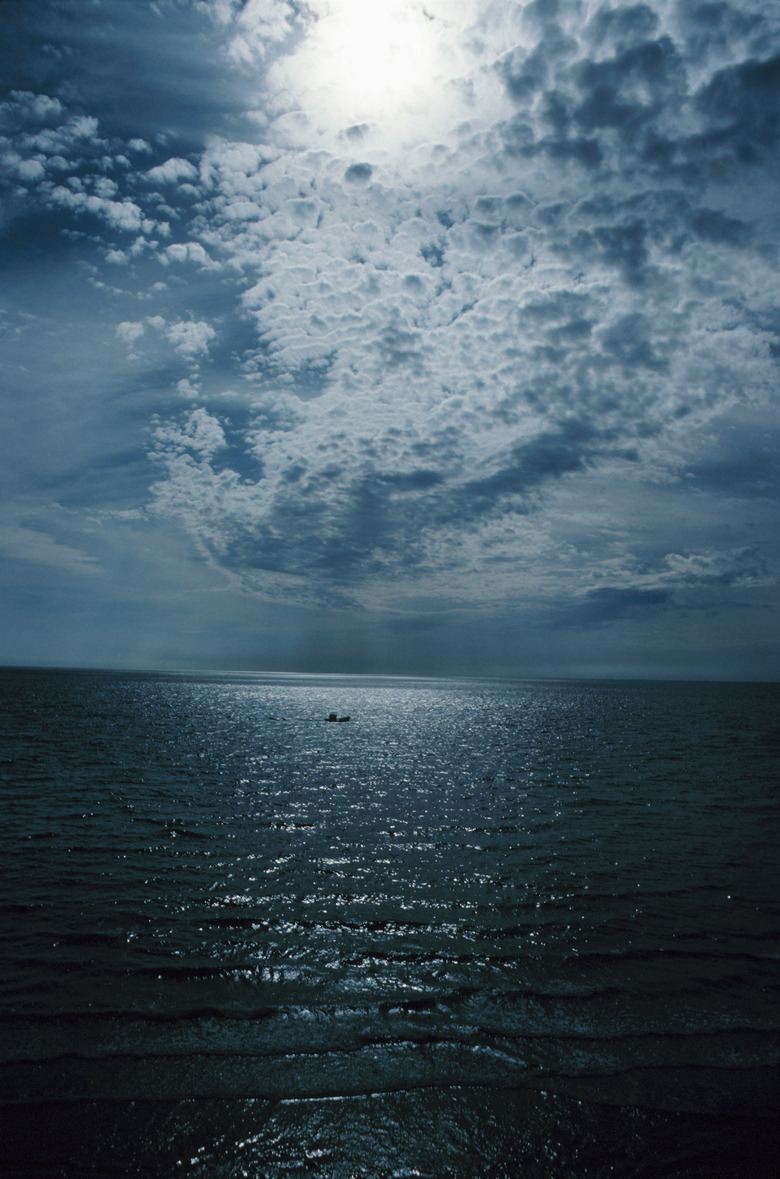How To Make A "Water Cycle Experiment" Easy And Fun
Students enjoy interactive activities where they get the chance to get their hands a little dirty. Organize a terrarium experiment, so students can build and observe a small scale model of the water cycle. As a closed system, the plants living inside them require little water as it continuously cycles between liquid and gaseous forms. To add an element of scientific inquiry, students can create two or more terrariums under different conditions. You can either divide the class into work groups or create terrariums as a whole class.
Step 1
Decide, as a class, what the dependent variable will be for the water cycle terrarium experiment. For example, create three terrariums, one that is completely closed or covered, one with a top that is only half-covered and one with an open top. Other dependent variables include placing the terrariums at different distances from a light source or giving each terrarium different initial amounts of water. Older students working in groups can determine their own dependent variables.
Step 2
Formulate, as a class, a hypothesis related to the dependent variable; older students can formulate their own hypotheses. For example, if you are creating an open, half open and closed terrarium, a hypothesis could be the open system will need to be watered more frequently because it will lose more water to evaporation.
Step 3
Cut the neck off of each plastic pop bottle that your class will be using; save the necks. You need one plastic bottle per terrarium.
Step 4
Place 1/2 inch of gravel in the bottom of each plastic bottle. Sprinkle a thin layer of charcoal, if available, on top of the gravel to promote proper water drainage.
Step 5
Place approximately 2 inches of potting soil on top of the gravel layer. Follow the planting instructions for the particular plant you are using; if the species requires a planting depth of three inches, place over 3 inches of soil on top of the gravel.
Step 6
Insert the roots of one or more plants, depending on their size, into the soil; pat the soil in and around the roots and the plant's base.
Step 7
Water the plants lightly with a spray bottle.
Step 8
Provide students with twigs, pebbles, figurines and allow them to have fun decorating their terrarium.
Step 9
Tape the neck back on each of the plastic bottles using clear packing tape. Screw the pop lid on top of the bottles to make the terrariums have closed systems.
Step 10
Place the terrariums in indirect sunlight.
Things Needed
- 2-liter pop bottles
- Scissors
- Gravel
- Charcoal (optional)
- Potting soil
- Plants, such as Baby tears, African violets, ferns, club moss, English ivy or arrowhead
- Clear packing tape
- Spray bottle
- Pebbles, twigs and figurines (optional)
TL;DR (Too Long; Didn't Read)
Encourage students to be involved as much as possible when creating the terrariums.
Warning
If the sides of the plastic bottles become overly misty, due to condensation, the plants are being watered too much, states The University of Georgia.
Cite This Article
MLA
Brunet, Michelle. "How To Make A "Water Cycle Experiment" Easy And Fun" sciencing.com, https://www.sciencing.com/water-cycle-experiment-easy-fun-4735655/. 24 April 2017.
APA
Brunet, Michelle. (2017, April 24). How To Make A "Water Cycle Experiment" Easy And Fun. sciencing.com. Retrieved from https://www.sciencing.com/water-cycle-experiment-easy-fun-4735655/
Chicago
Brunet, Michelle. How To Make A "Water Cycle Experiment" Easy And Fun last modified March 24, 2022. https://www.sciencing.com/water-cycle-experiment-easy-fun-4735655/
